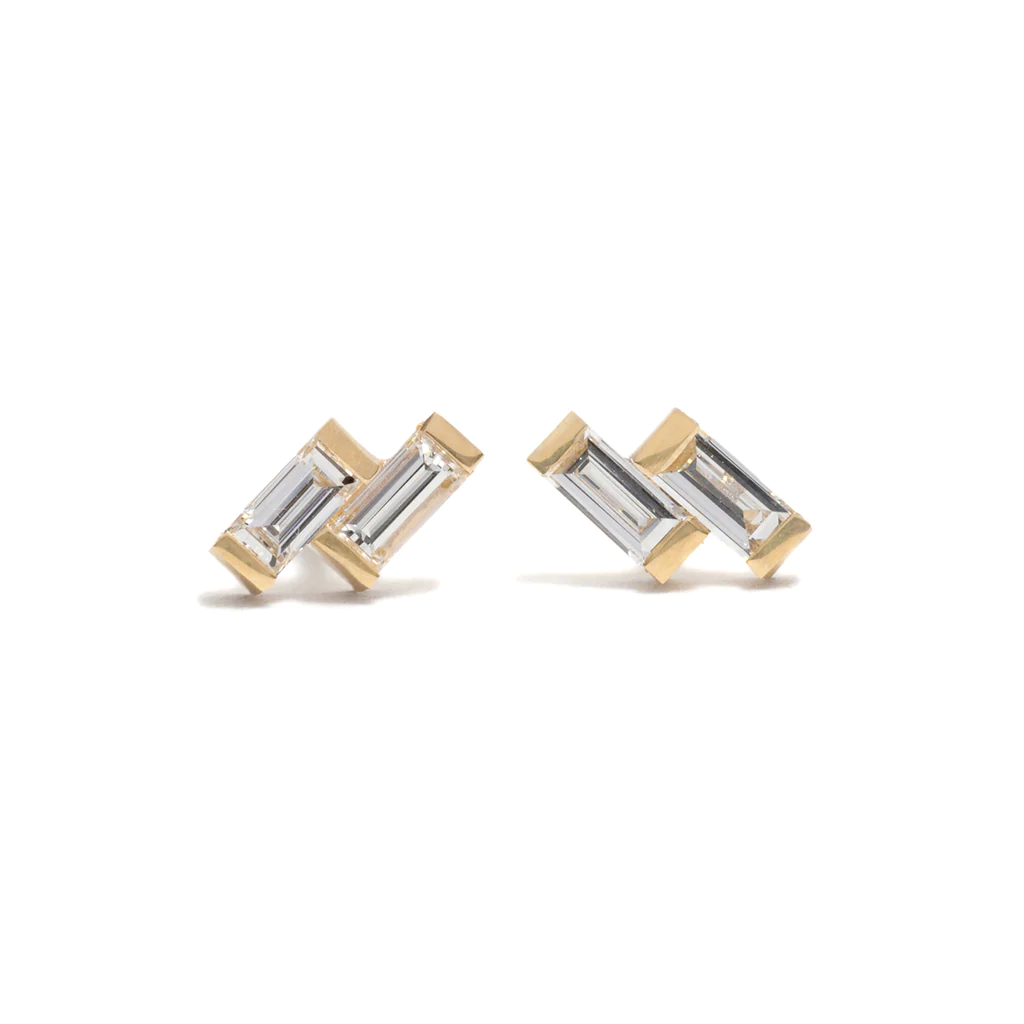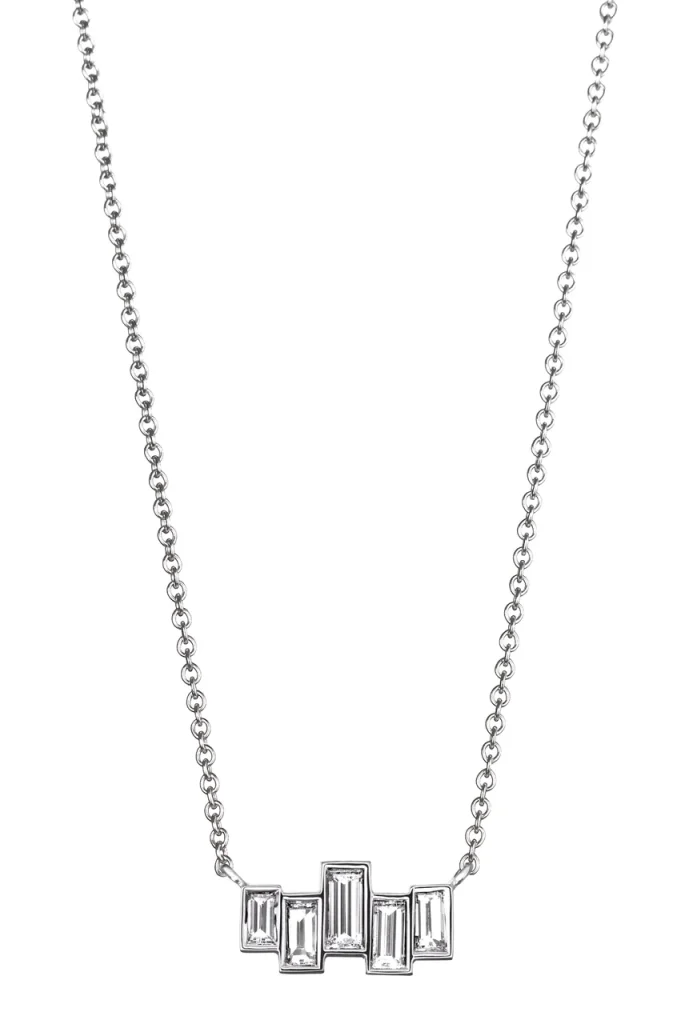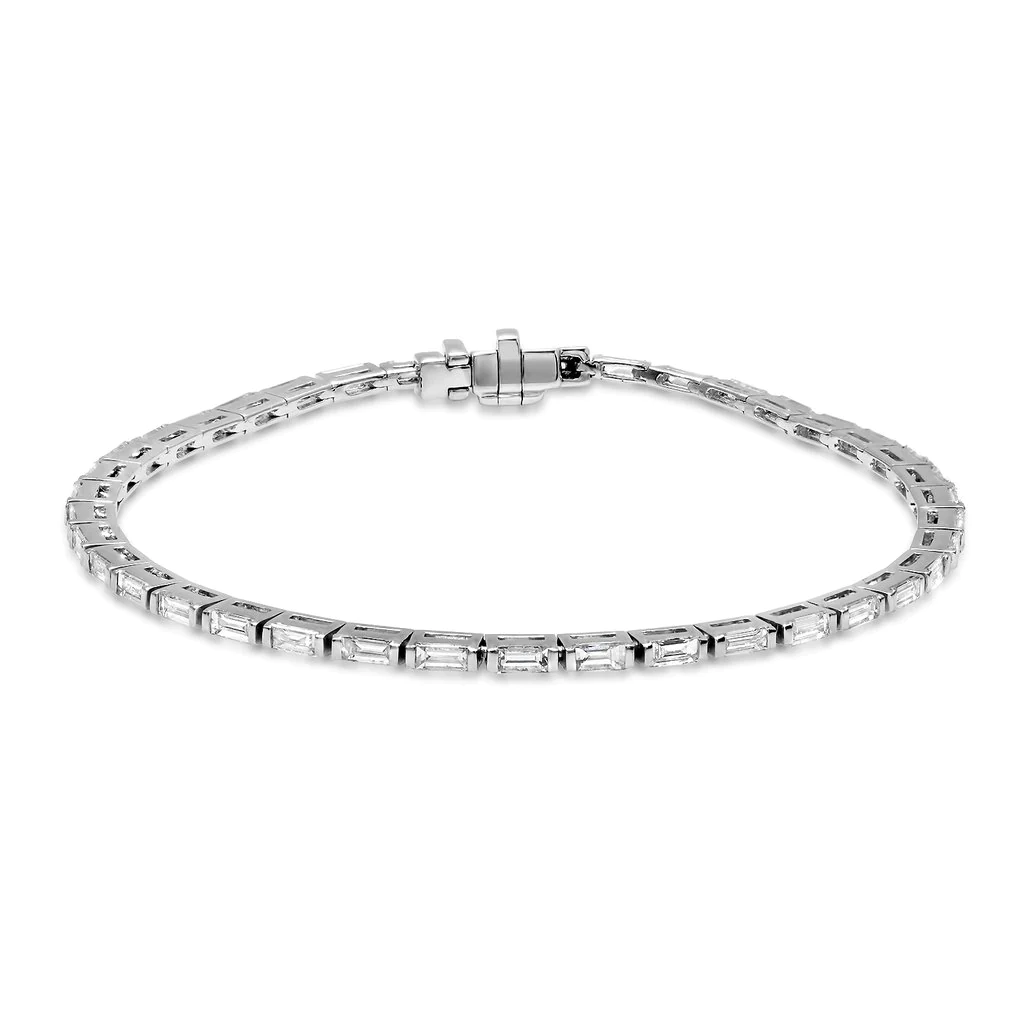The baguette cut is a popular diamond shape characterised by its rectangular or elongated form with straight sides and step-cut facets. It is often used as side stones to complement a central diamond or gemstone in jewellery settings. The history of the baguette cut can be traced back to the early 20th century.
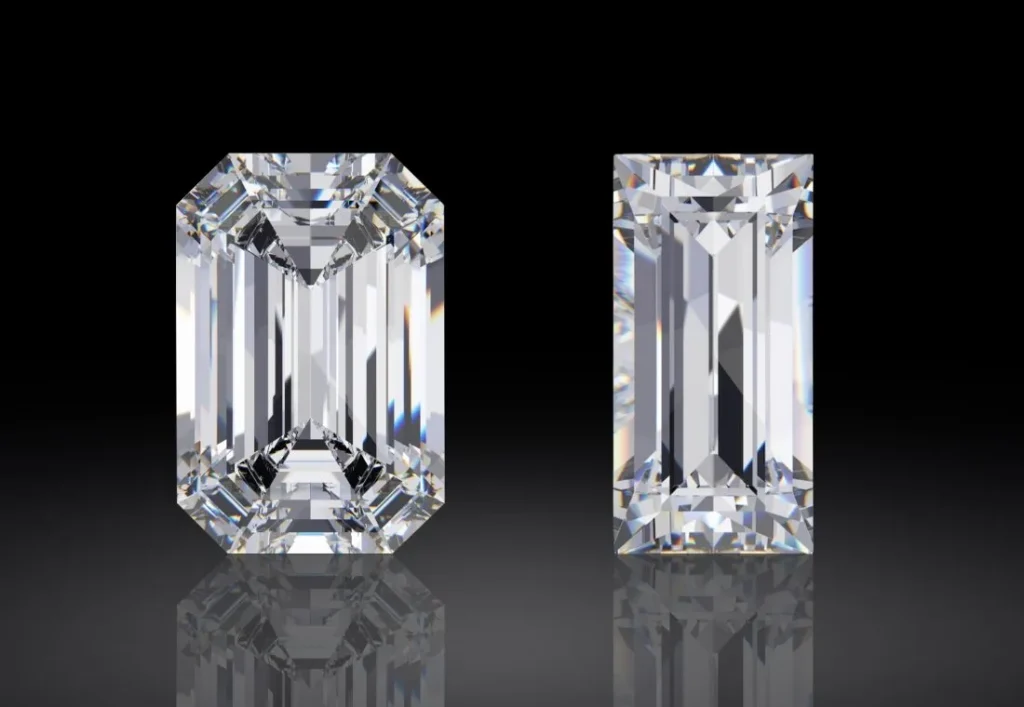
- Origins: Art Deco Era (1920s-1930s):
- The baguette cut gained prominence during the Art Deco period, which spanned from the 1920s to the 1930s. This era was characterised by a fascination with geometric shapes, symmetry, and bold designs in art and fashion.
- Jewellery designers during this time sought clean lines and streamlined shapes, and the baguette cut fit perfectly into this aesthetic.
- Rise in Popularity:
- Baguette-cut diamonds became popular as side stones, flanking larger centre stones or serving as accents in various jewellery designs.
- The straight edges and clean lines of the baguette cut made it an ideal choice for creating a sense of elegance and sophistication.
- Post-World War II Period:
- After World War II, the baguette cut continued to be favoured in jewellery designs. The economic recovery of the post-war era brought about a resurgence in luxury and a renewed interest in classic and timeless designs.
- After World War II, the baguette cut continued to be favoured in jewellery designs. The economic recovery of the post-war era brought about a resurgence in luxury and a renewed interest in classic and timeless designs.
- Modern Usage:
- The baguette cut has maintained its popularity into the contemporary era, often used in combination with other diamond shapes or in three-stone settings.
- It is commonly seen in engagement rings, wedding bands, and other types of fine jewellery.
- Advancements in Diamond Cutting:
- Over the years, advancements in diamond-cutting techniques have allowed for more precision in creating baguette-cut diamonds, enhancing their brilliance and overall appeal.
- Over the years, advancements in diamond-cutting techniques have allowed for more precision in creating baguette-cut diamonds, enhancing their brilliance and overall appeal.
- Versatility:
- Baguette-cut diamonds are versatile and can be used in various jewellery settings, including earrings, necklaces, and bracelets.
- They are often chosen for their ability to complement other diamond shapes or gemstones.
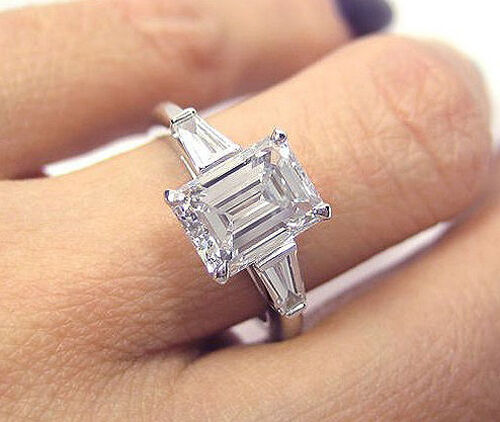
In summary, the baguette cut diamond has a history rooted in the Art Deco era, where its clean lines and geometric shape were embraced. Its enduring popularity is a testament to its timeless and versatile design, making it a favorite among jewellery designers and enthusiasts alike.
